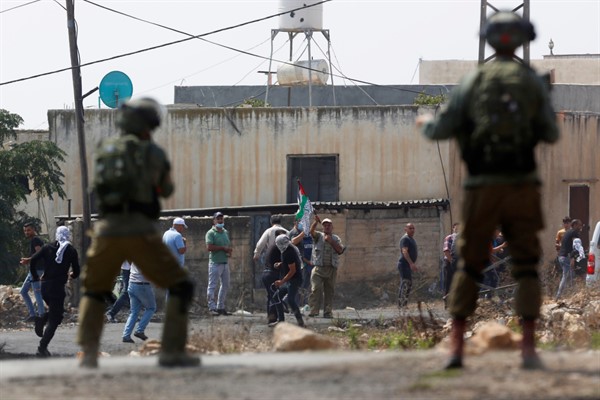Harun Abu Aram was shot in the neck on the first day of the New Year. In a confrontation captured on film, the 24-year-old Palestinian, along with several other men, can be seen tussling with Israeli soldiers who had been trying to seize a village generator in the West Bank’s South Hebron hills—before a single shot rings out. Over a month later, Abu Aram remains in critical condition in a Hebron hospital, paralyzed from the neck down.
In the aftermath of the shooting, the Israeli Defense Forces claimed that there had been a “violent disturbance” involving “around 150 Palestinians” who had engaged in “stone-throwing on a massive scale.” The soldiers, it said, simply “responded using measures to disperse the crowd and fired into the air.”
Yet witnesses on the ground deny both that the crowd was that large and the allegations of stone-throwing, and the video shows no sign that the soldiers faced any significant threat before Abu Aram was shot. Other eyewitnesses even claimed that the soldiers had tried to prevent him from going to the hospital, despite his critical wounds, shooting at the tires of the car that took him there. The next day, as news of Abu Aram’s shooting spread, the Twitter account of the European Union’s delegation to the West Bank and Gaza criticized Israeli authorities for this “excessive and disproportionate use of force,” and called for an investigation.

